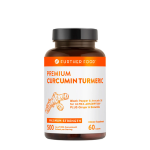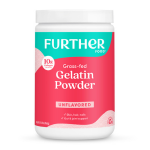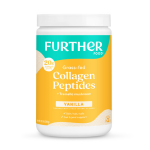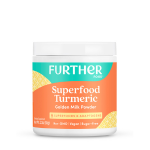 BEET KVASS
Kvass, an Eastern European drink, is best known in its traditional Russian variation: an everyday fermented drink made from rye, with a low (around 1%) alcohol content. The Ukrainian and Polish versions, however, are far more nutrient-dense, using beets and other vegetables as opposed to stale bread as a base. Beet kvass blends the anti-inflammatory and antioxidants qualities of beets with the probiotic benefits of fermentation. In fact, the fermentation process enhances the already strong nutritional profile of raw beets, increasing levels of food enzymes and B-vitamins (particularly folate). The best news is, making kvass is as easy as brewing coffee. Here’s how.
BEET KVASS
Kvass, an Eastern European drink, is best known in its traditional Russian variation: an everyday fermented drink made from rye, with a low (around 1%) alcohol content. The Ukrainian and Polish versions, however, are far more nutrient-dense, using beets and other vegetables as opposed to stale bread as a base. Beet kvass blends the anti-inflammatory and antioxidants qualities of beets with the probiotic benefits of fermentation. In fact, the fermentation process enhances the already strong nutritional profile of raw beets, increasing levels of food enzymes and B-vitamins (particularly folate). The best news is, making kvass is as easy as brewing coffee. Here’s how.
 KANJI
Much like kvass, Gajar kanji, an Indian fermented drink usually prepared for the festival of Holi, is made by fermenting vegetables. Traditionally made with black or purple carrots native to Northern India, Kanji has a deep jewel tone, displaying its nutrient density. In this recipe, beets add the signature hue to the orange carrots of American soil, and ground mustard seeds add a pungent, medicinal kick. The seeds are believed to cool the body in the summer and warm it in the winter. While kanji doesn’t appear on many store shelves, it is easy and inexpensive to make. See our recipe here!
KANJI
Much like kvass, Gajar kanji, an Indian fermented drink usually prepared for the festival of Holi, is made by fermenting vegetables. Traditionally made with black or purple carrots native to Northern India, Kanji has a deep jewel tone, displaying its nutrient density. In this recipe, beets add the signature hue to the orange carrots of American soil, and ground mustard seeds add a pungent, medicinal kick. The seeds are believed to cool the body in the summer and warm it in the winter. While kanji doesn’t appear on many store shelves, it is easy and inexpensive to make. See our recipe here!
 KEFIR
More widely known and more easily accessible than kvass and kanji, kefir is a tangy cousin of yogurt, but with a thinner, more sippable texture. This fermented drink also has Eastern European origins, but is made by mixing milk (or coconut water for a modern twist) and kefir “grains,” a granular combination of bacterial and yeast colonies. The bacteria and yeast feed on the milk’s lactose, breaking down the sugar and making it easier to digest than other milk products. The fermentation provides a cocktail of energy-boosting essential B-vitamins.
Kefir is available in the dairy section of most grocery stores, and a little can go a long way. Stretch your kefir by combining one cup of fresh, preferably whole, milk per one tablespoon of store-bought kefir in a glass jar. Secure a piece of cheesecloth or towel around the top of the jar with a rubber band. Let it sit at room temperature for 12-24 hours, until the mixture is thick and tangy. Refrigerate when ready. Repeat the process using your homemade kefir as necessary to keep a fresh stock.
Note: PLEASE consult with your doctor before making any changes to your diet or medications. The material on this site is provided for educational purposes only, and is not to be used for medical advice, diagnosis or treatment.
KEFIR
More widely known and more easily accessible than kvass and kanji, kefir is a tangy cousin of yogurt, but with a thinner, more sippable texture. This fermented drink also has Eastern European origins, but is made by mixing milk (or coconut water for a modern twist) and kefir “grains,” a granular combination of bacterial and yeast colonies. The bacteria and yeast feed on the milk’s lactose, breaking down the sugar and making it easier to digest than other milk products. The fermentation provides a cocktail of energy-boosting essential B-vitamins.
Kefir is available in the dairy section of most grocery stores, and a little can go a long way. Stretch your kefir by combining one cup of fresh, preferably whole, milk per one tablespoon of store-bought kefir in a glass jar. Secure a piece of cheesecloth or towel around the top of the jar with a rubber band. Let it sit at room temperature for 12-24 hours, until the mixture is thick and tangy. Refrigerate when ready. Repeat the process using your homemade kefir as necessary to keep a fresh stock.
Note: PLEASE consult with your doctor before making any changes to your diet or medications. The material on this site is provided for educational purposes only, and is not to be used for medical advice, diagnosis or treatment.
Heal your gut with Further Food Collagen Peptides
Want to read more? DIY Coconut Yogurt DIY: Easy Fermented Cauliflower After Years of Struggling With IBS, I Finally Figured Out How To Feel Better How to Heal Leaky Gut? Start with Finding Out Your Food Sensitivities





















